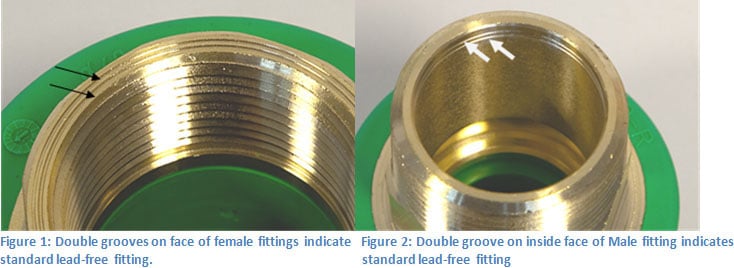IDENTIFYING LEAD FREE VS. ZERO LEAD BRASS FITTINGS
Aquatherm produces two types of metal transition fittings.
- Stainless steel transition fittings.
- Brass transition fittings.
The brass fittings are broken down into two different types.
- Lead-free type.
- Zero-lead type (meeting the revised Safe Drinking Water Act requirements of less than 0.25% lead which goes into effect in Jan-2014).
This paper will focus on the differences between the two types of brass fittings and how to visually distinguish between the two.
Lead-Free Brass Fittings
First, let’s look at the lead-free type of brass fitting. The standard lead-free brass fittings are made with marine-grade DZR brass and are currently acceptable under the Safe Drinking Water Act, but will be restricted to non-potable water applications as of 2014.
The lead-free fittings are identified by a double groove on the face of the female fitting (see Fig. 1) and on the inside of the male fitting (see Fig. 2).

Zero-Lead Fittings
The zero-lead fittings are compliant with the new Reduction of Lead in Drinking Water Act and are recommended for areas currently requiring 0.25% lead content or less such as California and Vermont. The new drinking water requirements will take effect in all areas of the United States beginning January 1, 2014.
These fittings have an almost silver color compared to the more yellow color of the lead-free fitting. In addition, the fittings are distinguished from the lead-free fitting by a single groove cut into the face or the inside surface of the fitting.

Due to the higher cost of the zero-lead fittings, Aquatherm recommends using the zero-lead fittings only for potable water projects. All other projects can use the lead-free fittings.